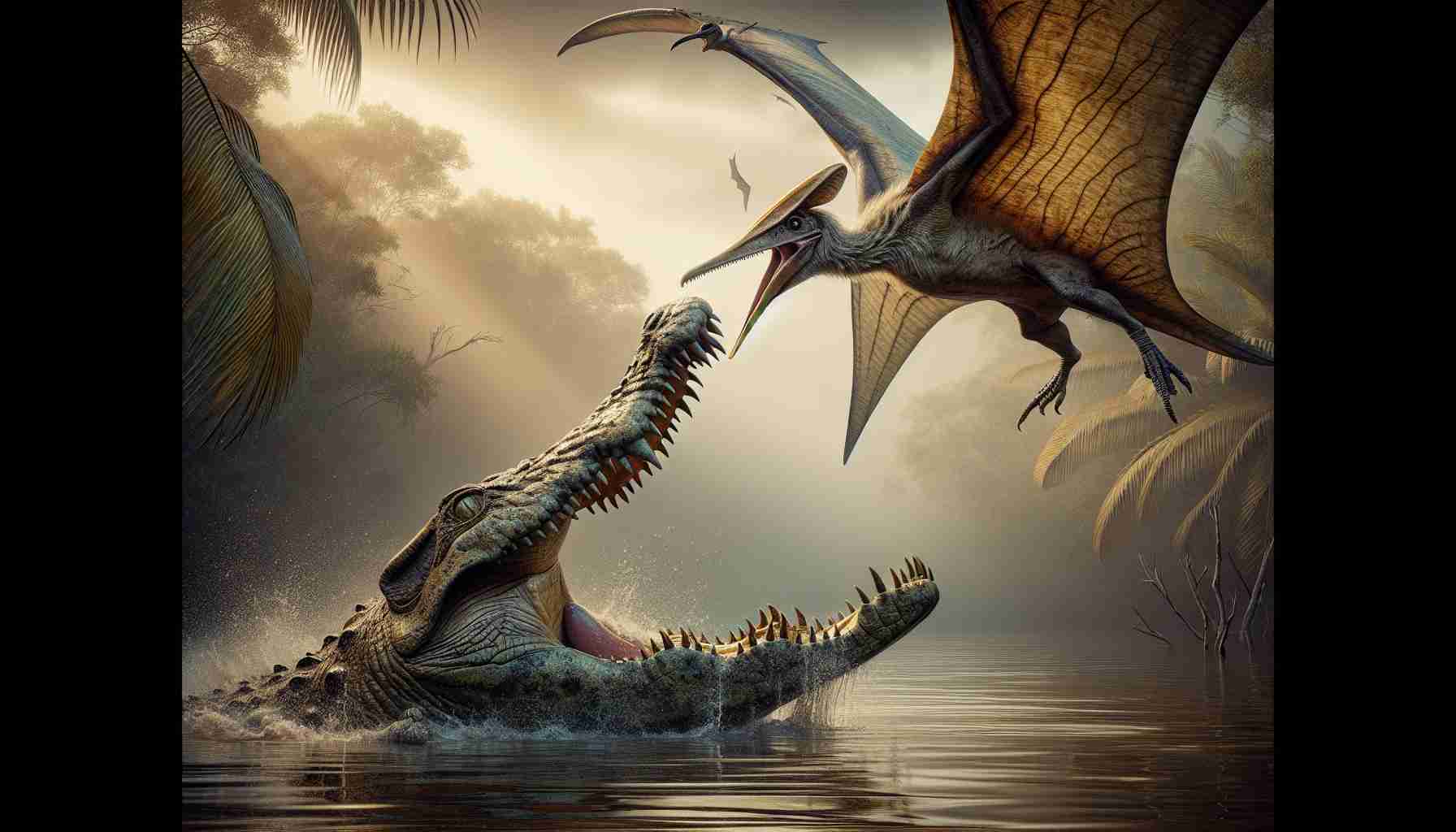- A fossilized neck bone of a juvenile pterosaur with a bite mark offers insights into ancient predator-prey dynamics in the Cretaceous period.
- Advanced micro-CT scanning technology is pivotal in authenticating bite marks without damaging fossils.
- Juvenile Azhdarchid pterosaurs had a wingspan of about 2 meters, while adults could reach up to 10 meters, showcasing significant evolutionary development.
- The find sheds light on the complex survival strategies and intense competition in prehistoric ecosystems.
- New imaging technologies are revolutionizing paleontological research by allowing non-invasive fossil exploration.
- Research is shifting focus to understanding intricate relationships within ancient ecosystems, deepening comprehension of prehistoric life.
The Thrill of Discovery
Emerging from the sands of time, a sensational find has captivated the paleontological world—a fossilized neck bone from a young pterosaur has been unearthed in Dinosaur Provincial Park, Alberta, Canada. Bearing a dramatic puncture mark from a crocodile-like predator, this 76-million-year-old relic provides a rare glimpse into the ancient predator-prey interactions that shaped the Cretaceous ecosystem.
Revolutionary Insights Unveiled
1. Cutting-Edge Analysis: Researchers employed advanced micro-CT scanning technology to authenticate the bite mark, showcasing a new frontier in fossil analysis. This method provides unparalleled precision without compromising the fossil’s integrity.
2. Pterosaur Profile: This juvenile pterosaur, part of the Azhdarchid family, boasted a wingspan of approximately 2 meters (6 feet 7 inches). Astonishingly, adult Azhdarchids could reach a staggering 10 meters (32 feet 10 inches) in wingspan, revealing significant evolutionary prowess.
3. Unveiling Ecosystem Dynamics: Discovering bite marks on juvenile pterosaur fossils is a rare phenomenon. This find offers valuable insights into the intense survival dynamics of the Cretaceous Period, where fierce competition and predation were the norms of existence.
Emerging Trends in Paleontology
1. Technological Marvels: The rise of imaging technologies like micro-CT scans signifies a transformative era in paleontological research, allowing scientists to explore fossils non-invasively.
2. Ecosystem Complexity: Focusing on intricate relationships and ecosystems, researchers are unraveling the mysteries of prehistoric life, enhancing our understanding beyond individual species.
As the veil lifts from a prehistoric world brimming with life and struggle, these discoveries continue to enrich our insights into survival, evolution, and the untamed ferocity of the natural world millennia ago.
Unveiling the Secrets of Ancient Predators: A Cretaceous Time Capsule
1. What Makes Fossil Micro-CT Scanning a Game Changer in Paleontology?
Answer: Micro-CT scanning has revolutionized fossil analysis by providing a non-invasive method to explore fossilized remains with high precision. Unlike traditional, potentially damaging methods, this technology allows researchers to capture detailed images of the internal structures of fossils, revealing nuances like bite marks or bone growth patterns without damaging the specimens. Its ability to preserve the fossil’s integrity while uncovering hidden details is transforming how paleontologists document and understand ancient life forms and interactions.
2. How Did Pterosaurs Fit into the Cretaceous Ecosystem?
Answer: Pterosaurs, particularly from the Azhdarchid family, played a significant role in the Cretaceous ecosystem. With juveniles around 2 meters in wingspan and adults potentially reaching up to 10 meters, they existed alongside dinosaurs and were a crucial part of the food web. Their fossils, especially when marked by predators, offer invaluable insights into predator-prey dynamics driving evolutionary adaptations. The puncture wound on the newly discovered fossil suggests interactions with formidable predators, adding to our understanding of ancient ecological relationships and survival strategies.
3. What Future Trends in Paleontology Could Emerge from These Discoveries?
Answer: The continued advancement in imaging technologies like micro-CT scanning promises an era where non-invasive methods become standard practice in fossil analysis, possibly unveiling details previously thought unobtainable. Additionally, there’s a growing focus on ecosystem-wide studies rather than isolated species analysis. Future research might dive deeper into the complexities of prehistoric ecosystems, using emerging technologies to trace evolutionary paths and ecological roles, ultimately enhancing stewardship of modern ecosystems by learning from ancient ones.
By illuminating the intricate past, these studies leverage today’s cutting-edge technologies to unlock secrets of Earth’s history, fueling a deeper understanding of life’s evolutionary path.
For more on the latest advancements in paleontology, consider visiting the Natural History Museum and American Museum of Natural History.













